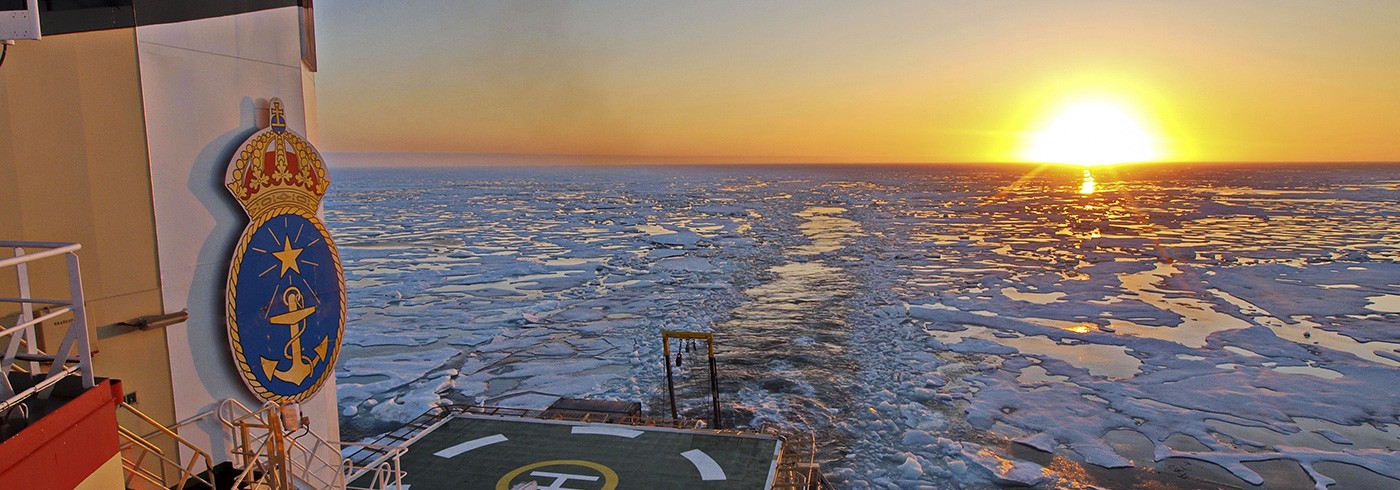Ocean circulation and water mass transformation at the Siberian shelf and continental shelf slope
5 July 2014 - 4 October 2014
Map showing the positions of the physical oceanography stations (CTD stations) during leg 2. The section from which data is shown in figure 3 is marked with a square.
The Arctic Ocean is presently under change with a rapidly decreasing sea ice cover. This change has been dramatic along the Siberian coast, where new, enormous areas of open water during summer have an obvious effect on the upper ocean temperature. Many biogeochemical processes, such as the air-sea gas exchange, degradation of organic material and fluxes of methane from the seabed, are very much dependent on the sea ice and ocean conditions, where the ocean temperature plays a major role.
The objective of the physical oceanography program was to examine the circulation and development of the warm Atlantic water layer along the Siberian shelf, as well as the shelf-basin exchange. A special study involved the passage of warm Atlantic water across the Lomonosov Ridge, as the Atlantic water follows ridges, this constitutes a major obstacle and prevents the warm Atlantic water to flow the Siberian slope. Also the distribution and flow of the upper low-salinity water, derived from rivers, Pacific inputs and ice melt was a main interest.

Positions for all physical oceanography CTD stations during leg 1 with color coding showing the surface and bottom temperature and salinity.
Water samples were collected at 155 CTD stations along the outer Siberian shelf seas, i.e. the Laptev Sea, the East Siberian Sea and the Chukchi Sea, as well as at the shelf slopes and parts of the Lomonosov Ridge.
Preliminary results show that the open ice-free waters of the northern Laptev Sea were characterized by relatively warm surface water, with temperatures up to 7 ºC, while the East Siberian Sea was ice-covered with surface temperature near the freezing point. The surface salinity was generally much lower in the Laptev Sea compared to the East Siberian Sea, showing the influence of the Lena River. The bottom salinity was higher in the Laptev Sea than in the East Siberian Sea which in combination with low surface salinity gave a much stronger density stratification and therefore also high stability.
The results are also showing that two sections outside the Russian economic zone are especially interesting. In these sections the hydrographic structure rises towards the continental slope, causing the Atlantic water layer to reach up towards the shelf edge. It is not clear whether this is a permanent feature or if it reflects a transient response to wind forcing. Another noteworthy feature is an oxygen minimum in the upper part of the Atlantic layer. This minimum extends seaward over the slope and the samples suggest that it’s caused by mixing along the isopycnal. (figure 3).


